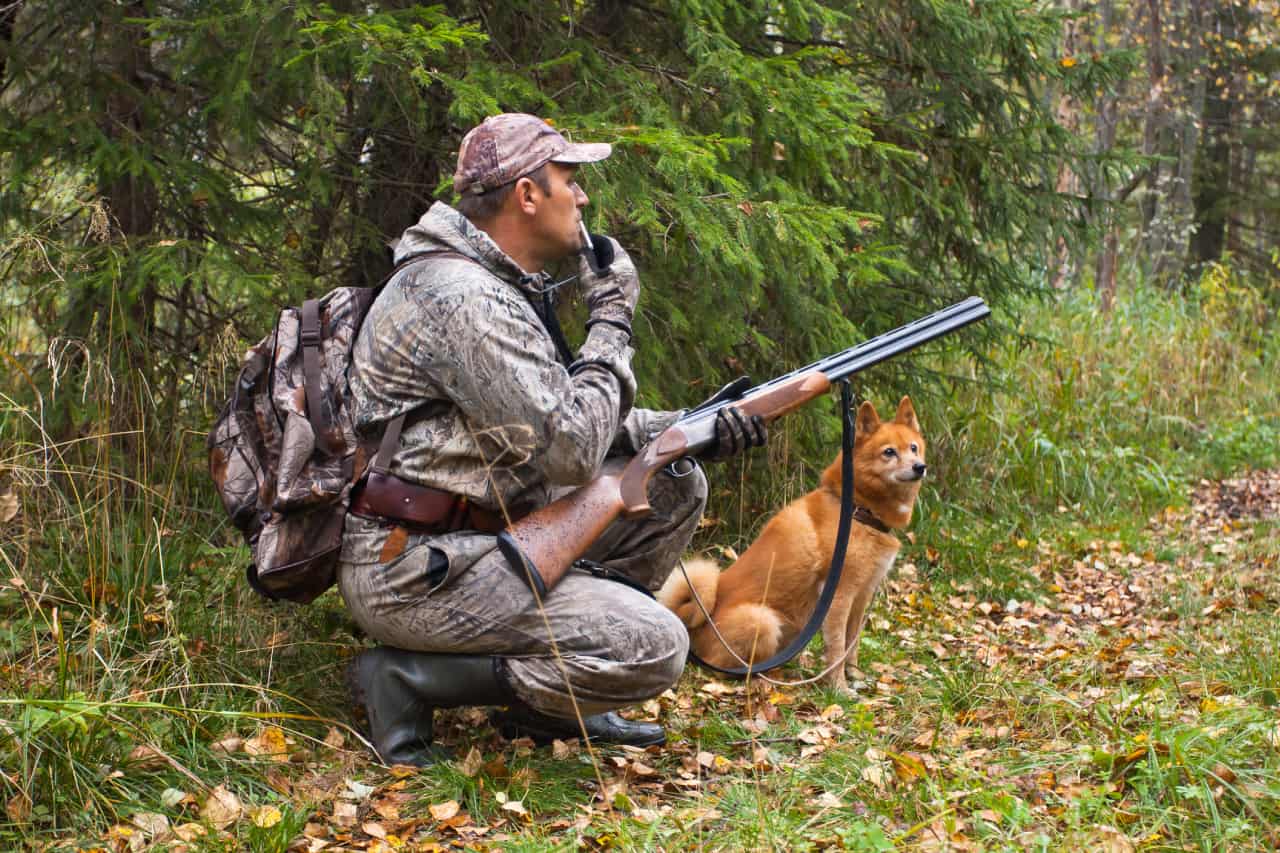For centuries people have called their dogs with a whistle. It is as if man has had some intuitive knowledge that dogs respond to whistles. Some people have the enviable ability to emit an ear-piercing whistle without using any device. Sadly, some of us lack this ability. We are left looking for artificial devices to produce that fantastic high-pitched sound used for calling and training dogs. Fortunately, there are a host of different dog training whistles available.
Different whistles can be used for different purposes with different dogs. You should test the whistles to find which one you use most comfortably. Acme is an established brand and one of the most famous whistle makers in the world. Price usually indicates durability.
The array of different whistles for use with gun dogs can be confusing – especially to a novice user. It is challenging to decide which whistle is best for you and your dog. This article will provide some insight into different types of whistles, advantages, and disadvantages.
Why Use A Whistle For Gun Dog Training?
It can be confusing to understand why a whistle is helpful in training dogs. After all, surely a loud shout can be used to direct a dog. Although it is true that a handler’s voice can be used to train dogs, there are some advantages to using whistles.
- A whistling sound can carry for a much greater distance than the human voice.
- Whistles consist of a few limited frequencies. The human voice is a complex mix of frequencies and differs according to the sounds we are saying. The complexity of a voice’s frequencies makes it more complicated to hear for the dog working away from the handler.
- Human voices can vary from day to day depending on health and mood. Whistles are always constant.
- Different handlers will have different voice pitches and intonations. A whistle can be used for the same dog by different handlers.
- A long day of hunting can cause a handler to become hoarse if he uses his voice to give commands.
Disadvantages Of Using Whistles In Training
There are disadvantages to using whistles to train your hunting dog:
- If you hunt with other dogs and handlers, it can be problematic if another handler is using the same whistle as you. This difficulty can be overcome by using your own series of sounds to train your dog.
- Some whistles can be so loud that they startle nervous dogs.
- Some people claim that a whistle hurts a dog’s ears. Much of this depends on how the whistle is used. A whistle blown right next to a dog’s ear will be too loud. A dog working far afield from his handler will need a loud whistle to hear the command and respond.
- Whistles can be forgotten at home or lost, which can cause problems if your dog only responds to a whistle.
- If a whistle breaks, it may be difficult to replace the whistle with precisely the same whistle.
- Some dogs do not respond to whistles at all.

Different Types Of Whistles
Whistles can vary based on structure, the sound produced, and the material used to manufacture the whistle. Handlers often prefer one kind over another and will vigorously defend the advantages of their chosen whistle.
Pea Whistles
A pea whistle has a small round bead or pea in the whistle. The pea is usually made from cork, but it is sometimes made from plastic in plastic whistles. The pea whistle’s advantage is that the pea allows the user to create different sounds with the whistle, and a trill can be produced. A trill is the sound made when the pea vibrates as the air moves over it, creating a warbling sound. Dogs often find this sound more interesting. The disadvantage of the pea whistle is that the pea can become jammed, especially in cold weather. A pea whistle is not as loud as a pea-less whistle.
Pea-Less Whistles
A pea-less whistle does not include a pea. The sound produced by this whistle is much clearer, louder, and can carry over a great distance. This whistle’s distance and amplitude are advantageous when working in windy conditions, near the ocean, or in the woods. The sound can cut through all the background noise and penetrate the normally sound-dampening effect of the trees in a wood. Sometimes this whistle can be too loud for sensitive dogs and may cause them to startle.
Plastic Whistles
Plastic whistles are very common. There are cheap varieties made from a brittle plastic that breaks easily. More durable plastic whistles are more expensive but last longer. Plastic is a less durable material, but users claim that more expensive plastic whistles can stand up to hard use. Plastic whistles come in a variety of colors. Bright-colored whistles are easy to find if you accidentally drop them in the grass. Plastic whistles are more popular with handlers working in cold environments. The whistle is less likely to cause lesions on the lips from the cold.
Metal Whistles
Metal whistles have been produced for many years. They are very durable and make clear notes when blown. Some metal whistles can be altered by turning a small cap to create different pitches. The problem is that they can cause burns from the cold when used in freezing conditions. This can be remedied by a rubber mouth grip on the whistle. The mouth grips are often made in bright colors to assist in finding the whistle if it drops. Brass whistles are popular but expensive. Brass is an excellent sound conductor and enhances the resonance of a whistle.
Stag Horn Whistles
These whistles are made from staghorn. They are popular amongst some enthusiasts, but often this is more for the novelty factor, although some handlers swear by them.
Ultrasonic Whistles
An ultrasonic whistle is also called a silent whistle or Galton’s whistle. These long, thin, tube-shaped whistles are usually made of metal. Silent whistles produce sound in the ultrasonic range, and therefore, humans are unable to hear the sound.
Dogs have much superior hearing to humans, and they can hear in ultrasonic frequencies. This whistle is helpful if it is necessary to use a whistle around suburbs or other places where people may be irritated by a constantly blowing whistle.
These whistles are not loud and maybe better for use with anxious dogs. Although this can be beneficial, the fact that they are not loud can be problematic if you are hunting or training your dog over long distances. Willful dogs may also ignore this whistle as it is not loud enough to catch their attention. Some handlers prefer not to use these whistles as they are unsure if the whistle has produced a sound since they cannot hear it. This whistle is not suited to dogs with hearing problems.
Ultrasonic dog whistles are commonly used in the military. They have an advantage in that they do not scare skittish game away during a hunt.
Dual Tone Whistles
Dual-tone whistles have an audible pea whistle on one side and a silent ultrasonic whistle on the other side.
Lanyard Attachments
It is critical to have a ring on the whistle for lanyard attachment. Whistles are easily dropped, fall out of pockets, or are generally misplaced. Lanyards prevent this from happening. They can also be bought in bright colors, which helps to locate a missing whistle.
Cost Of Whistles
The cheapest whistles are plastic varieties made from inferior quality plastic. Unfortunately, they are cheap for a reason. They often do not produce consistent sound because the plastic may warp or change shape slightly with changing temperatures. They also break easily. Whistles range in price, with plastic whistles usually being cheaper than metal whistles. The most expensive whistles are generally metal ultrasonic whistles. Metal whistles can last a lifetime. Costs of whistles can vary from three dollars to forty dollars.
Is Brand Important When Purchasing A Whistle For Gun Dogs?
There are whistle brands that have been in existence for a long time. Some newer brands can produce the same sounds in terms of pitch and loudness. The benefit of buying one of the established brands of whistles is that the whistle should be easier to replace if you lose it. It is incredibly frustrating to train your dog with a specific whistle, only to be stumped when your whistle breaks or gets lost, and you cannot find the same whistle to replace it.
Acme Whistles
Acme whistles are made in Britain and have been in production since the late nineteenth century. The founder of the company, Joseph Hudson, produced his first whistle in 1868. It was manufactured from brass. In 1878 the first whistle was used at a soccer match, and in 1883 the British police adopted it for use in policing.
Hudson experimented and created the first pea whistle in 1884. As may be seen, Acme has been in business for a long time and has a reputation for producing quality whistles. The outstanding feature of Acme whistles is that if you lose your whistle, you can easily replace it.
How To Evaluate Whistles
Whistles are evaluated according to several criteria that affect how efficiently the whistles work for gun dogs.
The whistle volume is essential when choosing a whistle as it affects the range over which the whistle can be heard. If you work your gun dog over vast fields, it is best to choose a whistle that can produce a larger volume. A pea-less whistle will create a greater amplitude sound.
The whistle must produce a consistent sound. Some whistles have adjustable frequencies, which is helpful for dedicated hunters that are working multiple gun dogs.
A whistle must be easy to clean. The whistle goes in your mouth, and you do not want it to build up dirt and germs.
Dog whistles need to be easy to use. You do not want to have to go through various oral contortions to produce a whistle while focusing on controlling your dog in a hunting situation.

The 8 Best Whistles For Gun Dog Training (According To The Experts)
Whistles are not always marketed as dog whistles. Many of them are advertised as referee whistles or survival whistles. Bear this in mind when you are searching for whistles. Veterinarians and trainers have tested whistles for use with gun dogs. Dr. Sara, a veterinarian, chose the following Acme whistles:
Acme 212 Pro Trialler – best all-round whistle. This is a loud whistle that does not change its frequency if you blow hard. It is helpful with difficult to train dogs or dogs that work in heavy undergrowth and wooded areas. It is popular with handlers of Setters, Labradors, Pointers, Retrievers, and Terriers.
Acme 535 best silent dog whistle. This whistle is recommended by the majority of trainers as the best silent gun dog whistle. Destin Benoit, a special forces canine handler, recommends this whistle. The whistle produces a sound frequency of 5200Hz to 12800hz.
Acme Thunderer 560 best hunting dog whistle. This is a pea whistle and is the most purchased whistle in the world. It is sometimes called the Titanic whistle as it was used aboard the Titanic. Thunderers are all made of metal, and the name says it all. These whistles are loud enough to penetrate through a lot of background noise. There are eight different Thunderer whistles that vary in length and width. The larger a whistle, the deeper the sound. The Acme Thunderer is considered a particularly easy whistle to blow.
Pippa Mattinson, a trainer who has been working with Labradors for forty years, recommends the Acme Dog Whistle 210.5 and the Acme 211.5. The 221.5 has a 5700Hz whistle with a range of just under a mile (1.5km). They are often used with retrieves that travel long distances around the handler.
Pippa prefers the Acme 210.5, which has a higher pitch. The Acme 210.5 is recommended by most trainers as the best starter whistle for gun dog trainers. It is a whistle specifically designed for spaniels or hard-of-hearing dogs. It produces a single frequency whistle at 6200 Hz and a range of 90m. It is a plastic whistle that comes in eight different colors – some beautiful brightly colored ones to help find a lost whistle. The Acme 210.5 and Acme 211.5 retail between nine to ten dollars.
The Storm Alert Whistle is popular as a long-range dog whistle. Another popular long-range whistle is the Sportdog Competition Mega Whistle. Hunters like these whistles as they can be heard three to four-hundred yards away in blustery winds. Some hunters do not like Sportdog whistles as they are all made of plastic, and certain individuals have found them challenging to blow. There is also a problem as they do not all have a lanyard attachment.
The Fox CMG Mini is a well-liked whistle with a comfortable latex-free mouth grip. It has a very shrill, high tone allowing it to be heard in areas where there is high ambient noise. Fox whistles are considered a good make of whistle.
Shepherd Lip Whistles
Shepherd lip whistles are not shaped in the customarily thought of whistle design. They have an almost triangular shape and used to be used with most working dogs. A lip whistle is much more taxing to use and requires practice on the part of the handler. Lip whistles are the most versatile whistles in creating different sounds. Many different brands make shepherd’s lip whistles.
Conclusion
A whistle can be a valuable device in training a gun dog. However, it must be remembered that a device is only as good as the user. Handlers must train the dog correctly using the whistle. Specific whistles work better for certain dogs, and handlers have particular preferences. Whistles range in price and durability. As a novice, it is best to get an easy-to-use whistle. It would help if you practiced producing different sounds with your whistle so that when you are training your gun dog, you do not confuse him.
References
https://www.acmewhistles.co.uk/stories/choosing-the-right-dog-whistle
https://www.mypetneedsthat.com/best-dog-whistle/
https://doglab.com/dog-whistle/
https://www.fox40world.com/whistles-attachments
http://www.madehow.com/Volume-4/Whistle.html
https://www.thelabradorsite.com/should-you-buy-a-dog-whistle/

